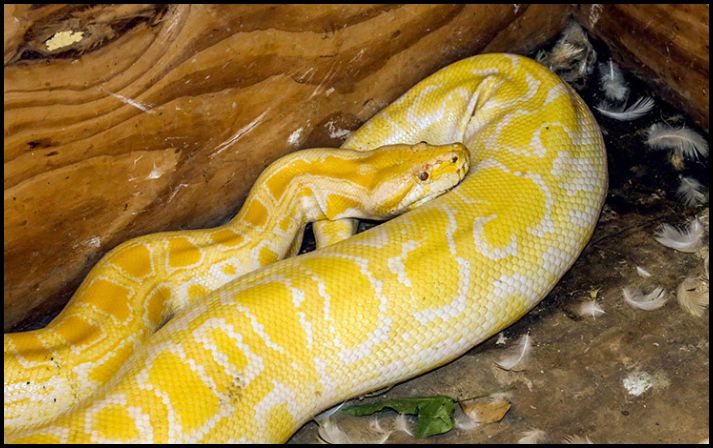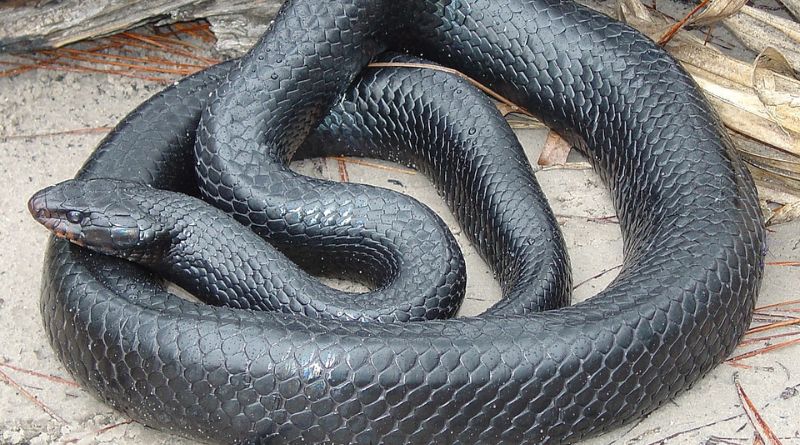When you think of the wilds of America, you might picture towering trees, expansive deserts, or sprawling wetlands. But lurking within these varied landscapes are some truly massive snakes. Let’s meet America’s seven biggest snakes and explore what makes each of these serpentine giants unique.
1. Eastern Diamondback Rattlesnake
The Eastern Diamondback Rattlesnake holds the title of the largest venomous snake in North America. Found primarily in the southeastern United States, this formidable snake can grow up to 8 feet long. Its distinctive diamond pattern and menacing rattle make it easy to identify but not one you’d want to encounter on a casual hike. The Eastern Diamondback is highly venomous, and its bite can be fatal to humans if not treated promptly. Despite its fearsome reputation, it plays a crucial role in controlling rodent populations.
2.

The Burmese Python is an invasive species in the United States, primarily found in Florida’s Everglades. Originally from Southeast Asia, these snakes were introduced to the U.S. through the exotic pet trade. Some of these pythons can grow to be over 20 feet long, making them some of the largest snakes in the world. Their presence in the Everglades poses a significant threat to local wildlife, as they prey on a wide variety of animals, including deer and alligators. Efforts are ongoing to control their population and mitigate their impact on the ecosystem.
3. Indigo Snake
The Eastern Indigo Snake is the longest native snake species in the U.S., with individuals reaching up to 8.5 feet in length. This non-venomous snake is known for its striking indigo-blue coloration, which can appear almost black in certain lighting. Found primarily in the southeastern U.S., the Eastern Indigo Snake is a powerful constrictor and preys on a variety of animals, including other snakes. Its presence is a good indicator of a healthy ecosystem, as it requires large, undisturbed habitats to thrive.
4. Green Anaconda

While not native to the United States, Green Anacondas have occasionally been spotted in the wild, especially in Florida. These sightings are likely due to escaped or released pets. Native to South America, Green Anacondas are among the heaviest snakes in the world, with some individuals reaching over 20 feet in length and weighing more than 200 pounds. These massive snakes are primarily aquatic and are known for their ability to subdue large prey, including caimans and capybaras.
5. Reticulated Python
Another giant snake that has found its way to the United States through the exotic pet trade is the Reticulated Python. While not as common as Burmese Pythons, Reticulated Pythons can still be found in certain areas, particularly in Florida. These snakes are among the longest in the world, with some individuals exceeding 20 feet in length. Known for their intricate and beautiful skin patterns, Reticulated Pythons are powerful constrictors and can take down large prey, making them both fascinating and formidable.
6. Rock Python

The African Rock Python, or simply Rock Python, is another large snake that has been observed in the United States, albeit in very small numbers. These snakes, native to sub-Saharan Africa, can grow up to 16 feet long. Rock Pythons are known for their aggressive nature and their ability to constrict and subdue large prey. In the U.S., their presence is primarily attributed to the pet trade, and sightings are rare. However, their potential impact on local ecosystems is a cause for concern.
7. Boa Constrictor
Boa Constrictors, although not native to the U.S., have established populations in some areas due to the exotic pet trade. These snakes are typically found in the wild in Florida, where they thrive in the warm, humid climate. Boa Constrictors can grow up to 13 feet long and are known for their distinctive pattern and strong constricting abilities. They prey on a variety of animals, including birds, mammals, and other reptiles. Their adaptability and reproductive success make them a significant invasive species.




